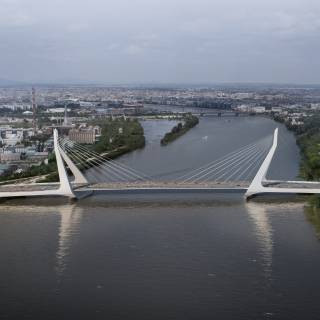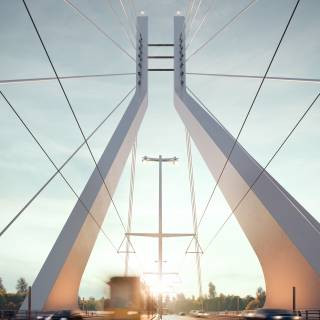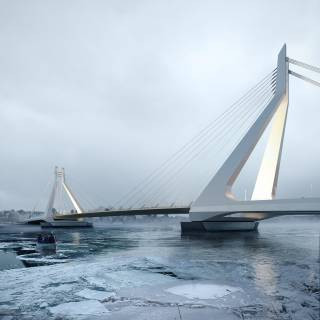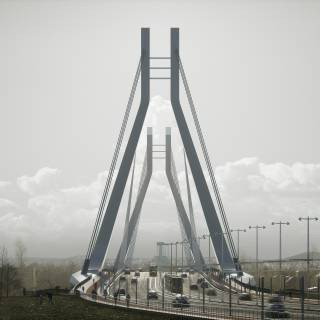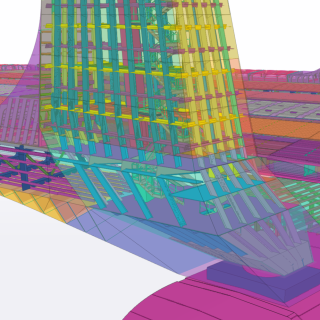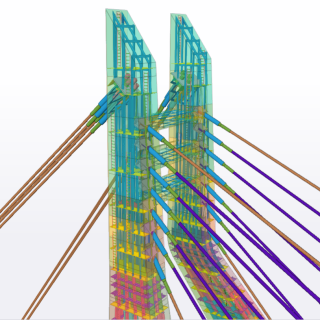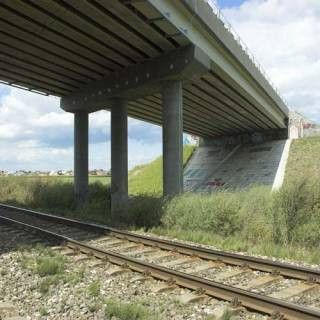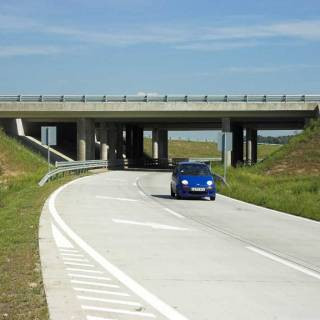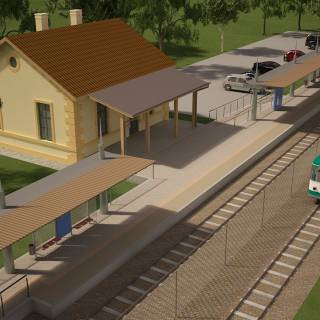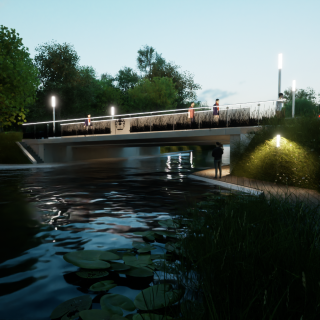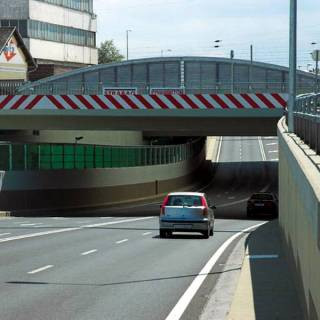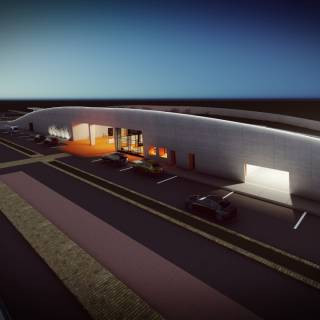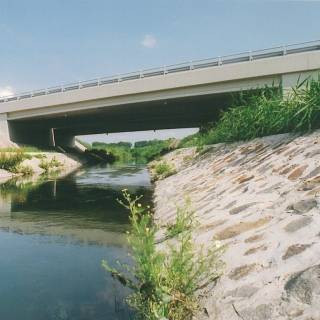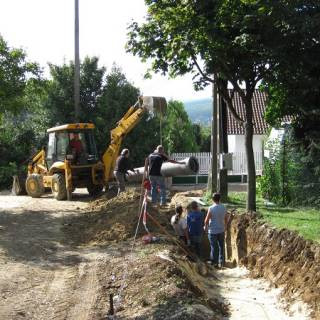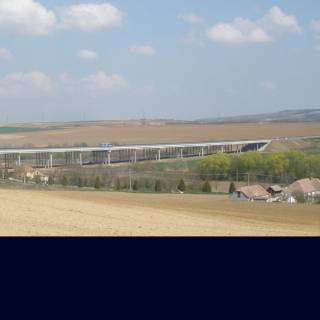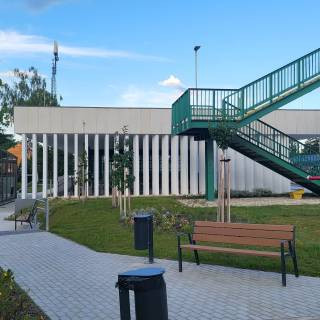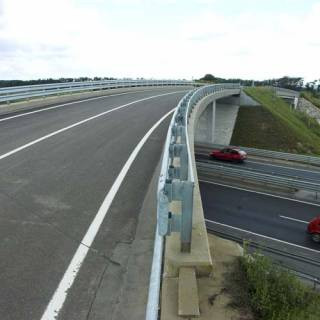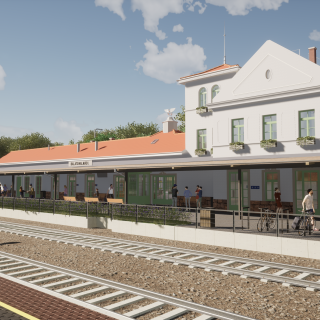New Danube Bridge following the alignment of Galvani Road in Budapest – approval, permit and tender design
The bridge crossing the main Danube branch, as the “southernmost” bridge in Budapest, provides public road, rail and pedestrian-bicycle connection between southern Buda and the northern corner of Csepel island.
The prelude to the design project was the international design tender conducted by KKBK Zrt. in 2017 and 2018 which was won by the two-pylon cable stayed bridge submission of the Dutch architect company UN Studio and their English bridge engineering partner called Buro Happold Ltd.
The actual project scope included the further planning of the winner competition entry. CÉH Zrt. as the Hungarian partner of the design consortium made up of UN Studio and Buro Happold carried out the design work of various disciplines.
The length of the five-span bridge: 546m; the spans: 29+111+246+111+29 m. Due to the site constraints the skewness of the bridge is 73o. The superstructure of the approach spans has a traditional composite structure. They are made unique by the steel structure architectural edge beams running along the edges of the bridge, which ensure transition between the pronounced edge beams of the main bridge and the retaining wall connected to the abutment. The main bridge itself is a 3-span, two-pylon stay cable structure. The side spans are continuous girders that do not make use of stay cables. The main support structure components of the side spans are closed-box cross-section edge beams. The main span is supported by 4x7 stay cables connecting to the pylons. A closed, orthotropic steel structure will be constructed underneath the walkways, bicycle routes and public road lanes along the full length of the main bridge, while an open, double-planed steel ladder beam structure with RC slab is to be constructed under the public transport lanes. The main visual components of the bridge are the boat-shaped RC river piers and the slanted double-footed steel pylons featuring a varied quadrilateral cross-section.
The complexity of the designed geometry made the application of a co-ordinated 3D model essential. The fundamental geometry was provided by the architectural Rhino model of UN Studio, which was further refined by the bridge engineering team, which used it to create the structural designs applying Tekla Structures.
The cooperation of more than 100 engineers and architects was required to complete the project successfully.
Investor: KKBK NZrt.,NIF Zrt., Építési és Közlekedési Minisztérium
